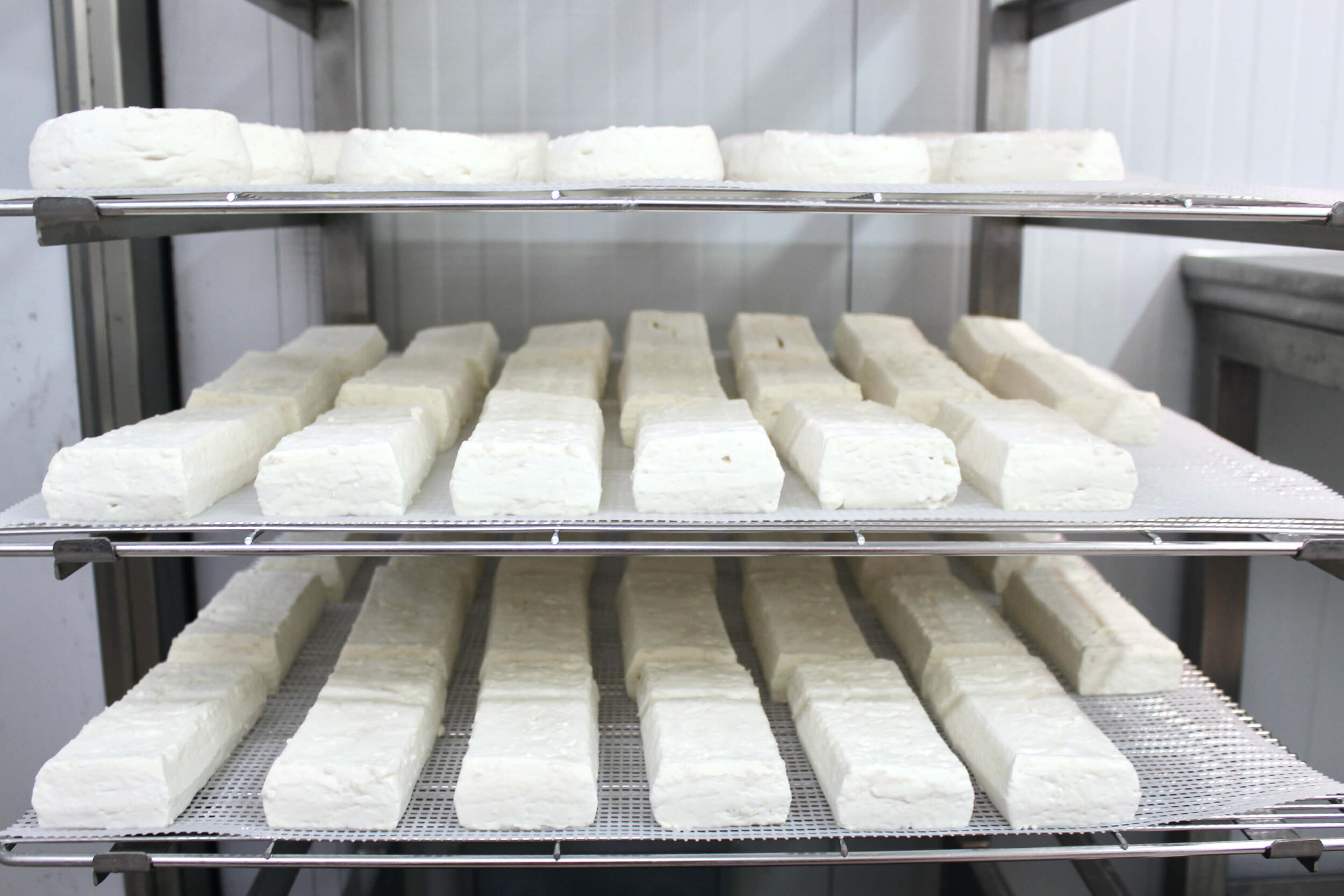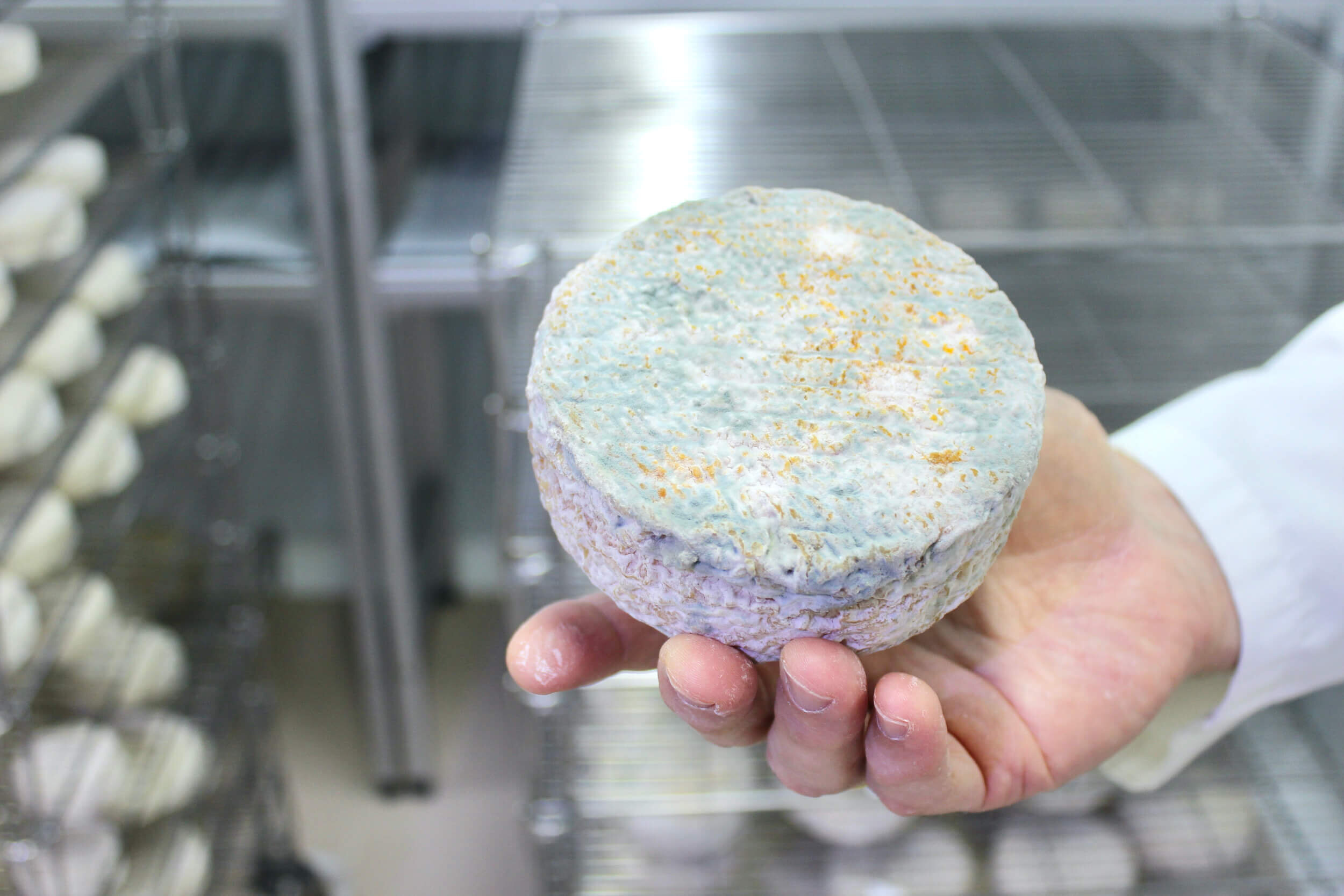Field Trip: Well Done Lácticos Creamery
Well Done Lácticos creamery is a well-respected cheese producer with Michelin-starred restaurants and turophiles clamoring for its cheese, but it’s also the definition of unassuming. So much so that when Google led me to a home in a small neighborhood outside of Seville, Spain, I called cheesemaker Rodolfo Del Río to make sure I wasn’t lost. I was not.
Getting into Cheese
Del Río’s son rangeld the dog while the cheesemaker led me through the front yard, past his wife waving from the kitchen, and down into the basement to his small cheese operation, one that’s won him multiple national and international awards in just five short years. At 50 years old, Del Río was let go from his administrative position at Dole, when the company moved the distribution center out of Spain. At that point, he says he had two choices: Reinvent himself completely or try to get hired in a similar role, something he knew would prove difficult at his age.
Del Río had family members who were working on a project in the Andalusian government’s initiative to increase artisan cheese production here in the south, and mentioned the idea to him. Del Río explained that Spain actually has some of the best goat milk in the world for cheese, but only 5% of it is used for artisan cheesemaking. The majority of the milk produced is used in industrial cheeses. “I’ve always loved to cook and I’m pretty creative,” he says. Living right outside Seville, he discovered he had the essential raw materials for cheesemaking: a basement to build his workshop and access to herds of Florida goats, a breed native to the areas along the Guadalquivir River that runs through southern Spain. This coveted breed produced milk with especially high levels of fat and protein, making it ideal for cheesemaking. So he dove in.
Lactic Acid Coagulation
After two years of courses and studies under artisan cheesemakers in Spain and France, Del Río set up his basement and dedicated himself to making cheeses using lactic acid coagulation. He explains that the method works much like a bread starter with lacto-fermentation, in which he develops the raw goat milk’s natural lactic bacterias over three days in order to ferment the milk and replicate bacteria. He then adds the starter to large batches of goat milk and it slowly develops enough lactic acid to coagulate. The method isn’t common in Spain, as most cheesemakers use the rennet method, adding lab-developed enzymes to the milk. “You can make an enzymatic cheese in eight hours,” says Del Río. “A lactic cheese doesn’t work that way. Most artisan cheeses are made in three or four days. I take six.”
He opens a bucket of milk in the process of slow coagulation. When the curds and whey have separated, Del Río explains how he fills each mold by hand with a small ladle, a technique he says is necessary to protect the delicate curds. Once they’re filled, gravity is the only pressure involved to remove the remaining whey from the curds, which also takes time. “I take the whey back to the goat ranchers,” says Del Río. “It’s an incredible source of protein.”
He shows off his cheese molds, noting the mold that won him several awards. The perforations are set at an angle, changing the way the whey escapes from the mold.
Del Río’s process is extensive and methodical, and due to the delicacy of his cheese, it is also highly controlled. The racks of fresh cheese in various shapes he formed yesterday are posted up next to calendars to mark their progress, along with detailed spreadsheets to constantly test their properties at every stage.
We head to the curing room where his limited production is gathering beautiful blue mold and dusty white rinds. “This is where you really make cheese,” he says. Del Río rotates the cheeses every day like a champagne riddler, turning them over and switching shelves to get even distributions of mold. Unlike popular hard cheeses here in Spain, Del Río’s develop quickly as they age; the differences are wildly distinct from one week to the next.
What Del Río is able to accomplish with his methodology is a cheese that is highly unique and essentially, irreproducible. The particular Florida goats, flora, and bacteria he captures in his space and process create flavors that can’t be replicated in any other place. “You can taste the difference,” he says.
Del Río sells most of his small batch cheeses to specialty cheese shops and restaurants in the south, including Michelin-star spots. He also runs a monthly cheese club for his biggest fans and has even refused big orders from Madrid in order to maintain his local orders. His goal is simply to grow his client base in the south and produce cheese for Andalusia.
Well Done is an atypical name for a creamery in a Spanish-speaking country, but Del Río says he wanted something that grabbed people’s attention. His logo, a viking ship with the numbers 844 inscribed on the front and a cheese wedge sail, is curious. He explains that it’s an ode to the vikings, who came through the Guadalquivir River in 844 and attempted to invade Seville. They were thwarted, but many stayed in the area where Del Río lives today, making the same soft, lactic style cheeses.
Tasting
We sit down to taste, starting with a fresh cheese round. Unlike most of the fresh cow’s milk cheeses on the market, which can often be neutral in flavor and on the rubbery or gritty side, Del Río’s fresh goat cheese is completely different. It’s earthy and floral, and though reminiscent of goat, it’s like tasting milk from an entirely different animal, the Andalusian Florida breed flexing its singularity. The texture is just as otherworldly; it’s overwhelmingly creamy and melts like butter.
His other cheeses are equally as fantastic. There’s a small pyramid shape lacquered in oloroso wine and annatto seeds. Then, it’s a more intense, compact round with a hazy blue rind aged 45 days. Both rinds are beautifully thin and wrinkled, the interiors thick and fudgy. “I really wanted to develop a cheese that you could easily pick up and eat.” says Del Río. Cheeses similar to his are often runny in the middle. He wanted something that was easier to handle, but that would still maintain a creamy texture.
To finish, he opens up a small jar of what he calls crema láctica, a thick paste that evolves slowly on the palate, and just as Del Río says, hits the back of the throat and rises up through your whole head.
As promised, these impressive flavors lingered past sips of wine and well after the visit, a constant reminder of Del Río’s genius and dedication to this craft.






